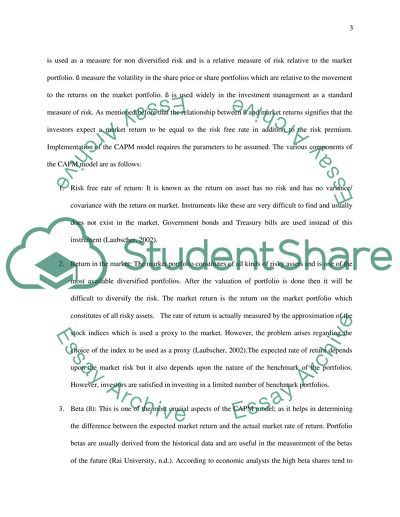Cite this document
(“CAPM (Capital Asset Pricing Model) Essay Example | Topics and Well Written Essays - 1750 words”, n.d.)
CAPM (Capital Asset Pricing Model) Essay Example | Topics and Well Written Essays - 1750 words. Retrieved from https://studentshare.org/finance-accounting/1474204-what-is-the-capm-and-of-what-practical-use-is-it
CAPM (Capital Asset Pricing Model) Essay Example | Topics and Well Written Essays - 1750 words. Retrieved from https://studentshare.org/finance-accounting/1474204-what-is-the-capm-and-of-what-practical-use-is-it
(CAPM (Capital Asset Pricing Model) Essay Example | Topics and Well Written Essays - 1750 Words)
CAPM (Capital Asset Pricing Model) Essay Example | Topics and Well Written Essays - 1750 Words. https://studentshare.org/finance-accounting/1474204-what-is-the-capm-and-of-what-practical-use-is-it.
CAPM (Capital Asset Pricing Model) Essay Example | Topics and Well Written Essays - 1750 Words. https://studentshare.org/finance-accounting/1474204-what-is-the-capm-and-of-what-practical-use-is-it.
“CAPM (Capital Asset Pricing Model) Essay Example | Topics and Well Written Essays - 1750 Words”, n.d. https://studentshare.org/finance-accounting/1474204-what-is-the-capm-and-of-what-practical-use-is-it.


